
Wed 18 Sept - early rise, texts, Vonges, bowthrusters, Auxonne, Besain
We rose early today, because we knew we had a few things to do later in the day, and were away from Pontaller by 0840h. During the morning, we tried sending messages to John, the Auxonne Capitain, to confirm with him that we were arriving in Auxonne today and asking him where we should moor. However, none of the messages seemed to be getting through. So we continued on, and would try to contact him when we were closer to Auxonne.
Soon after leaving Pontailler, we approached the "Pouderie Nationale" at Vonges, still wondering what it was. We had meant to Google it, after seeing it on the way up-river, but had forgotten to do so. However, we were soon left in no doubt as we passed the site, with it's large timber wharves on the river, when we heard a huge explosive noise. It was extremely loud and quite unnerving in such a quiet environment. So we now quickly did a Google search and found that Pouderie Nationale was indeed a French powder mill (explosives manufactruer) established in 1691. It originally manufactured and tested munitions for military purposes but now manufactures explosives for use in quarries, mines and fireworks. Clearly, it still has an active testing program. As we cruised down river, we heard several more explosions. This is a scenic area, but I wouldn't want to live here!
We soon passed the town of Lamarche, and I got a reasonable photo of the twin spires (but not the church itself).
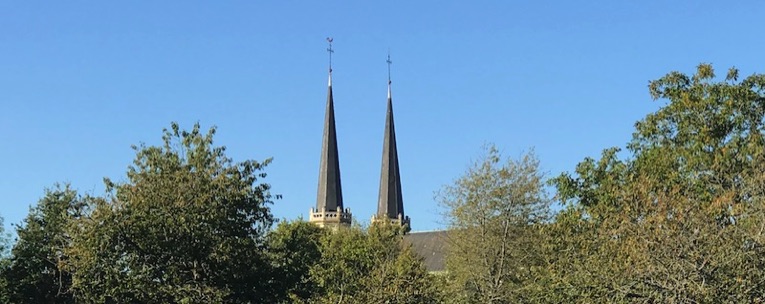
A little while later we arrived at our only lock for the day near Poncey. As we headed along the canalised section leading up to the lock, we noticed that the grass had been cut recently, with lots of grass, weeds and small branches floating in the canal. When we arrived at the lock, it was open and ready to receive us. But as we entered the lock and I applied reverse thrust to slow us down, very little happened. Also, as I used the bowthruster to pull the bow across to the left, the bowthruster whined but had no effect, as it did when I tried it in the reverse direction. So here we were heading into a lock full of rubbish, with no bowthrusters and little reverse thrust. Luckily, Rita has managed to get a rope around a bollard on first attempt as we passed it, and then wound it around the ship's bollard a few times, as I applied full reverse thrust. We managed to stop just before reaching the front gates, even if we were at a 45deg angle across the lock. Phew! Could do without this drama in our last lock for the year!
We realised that the bowthruster must have sucked in weed from the lock, and the prop must have got weed wrapped around it as we cruised down the canal and into the lock. So as we left the lock, we looked for a waiting pontoon where we could pull over and inspect things. But there was no pontoon at this lock; just a couple of dolphins (fat poles) that were spaced about 20m apart (longer than our boat). So I nudged the boat across to the dolphins (without bowthrusters), and got Rita to tie up to the front dolphin. I then reversed back towards the rear dolphin, with Rita gradually giving me more slack at the front as we progressed. When we got back to the rear dolphin, I slung a rope around it and caught it, and tied up to our rear bollard. As we were doing all this, a couple of boats came upstream, so we warned them of the conditions in the lock, and advised them not to use their bowthrusters.
Once the boat was securely tied up, Rita donned her swimming gear and went over the side to inspect the bowthrusters (after I ensured that power to the bowthrusters was definitely turned off). When she found the bowthuster tubes underwater, she realised that they were so far underwater that she could not reach very far into them with her arms. So she turned around and put her leg into the bowthruster tube (it sounds much worse than it actually was!) and used her toes to find and remove any weed near the bowthruster prop. She then did the bowthruster on the other side. After this she came back on-board and I went down to the weed-hatch in the engine room to clear the weed from around the prop. As we were doing all this, HyBoot came through the lock and passed us on their way to Auxonne. After Rita had had a shower, to warm up again, we continued on. But the next time we see someone cutting the grass by the side of the canal we shall be much more wary.
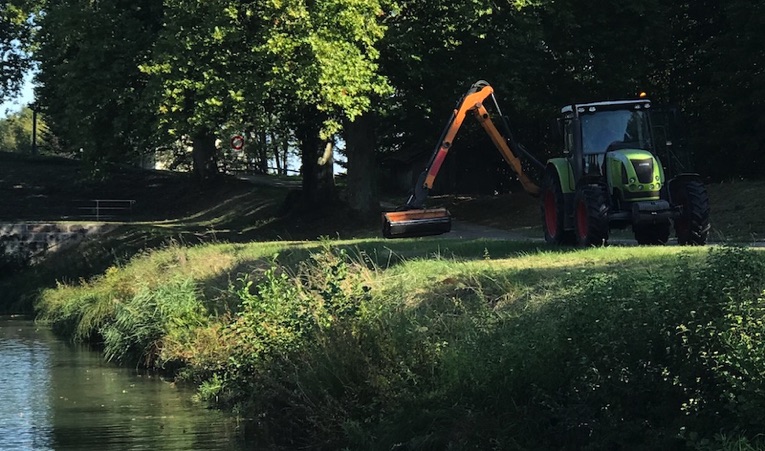
As we headed towards Auxonne, we caught up with HyBoot. We knew they were mooring on the hammerhead at the end of Pontoon A, so to avoid having to manoeuvre around them once they were moored, we asked if we could enter port ahead of them, and they agreed for us to pass them now.
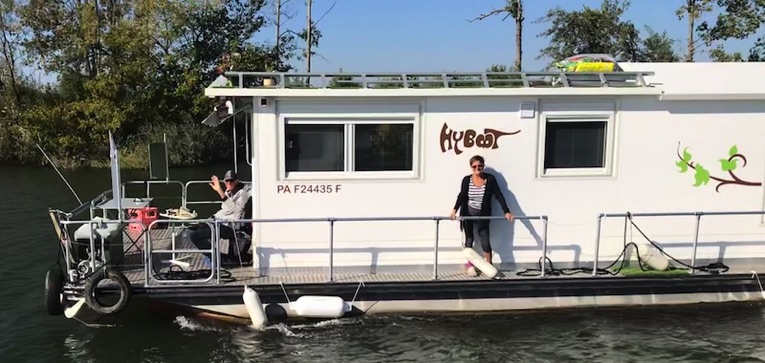
The autumn leaves floating on the river reminded us that the end of the cruising season was definitely on its way.
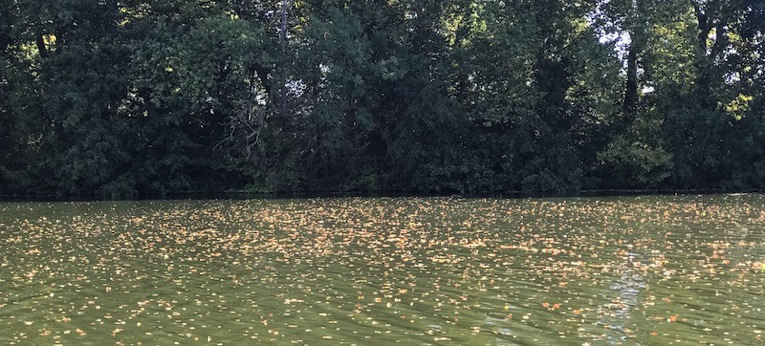
Soon, Port Royal at Auxonne appeared around the last bend, and we prepared to tie up for the last time in 2019. We finally contacted John by phone, and he advised us to moor, for the moment, alongside Morningstar again.
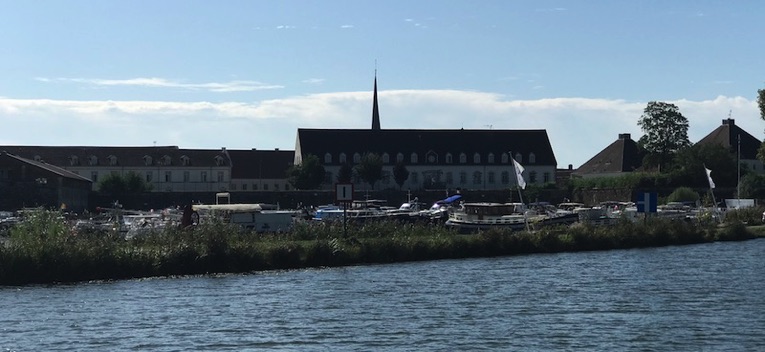
So, we rafted up on Morningstar, and then helped HyBoot to moor on the hammerhead at the end of our pontoon. After lunch, we walked up to the mechanics garage and collected the Scenic, which had now had all its Control Technique remedial work completed, plus having the fan and A/C system fixed. We then drove across to Sarah's at Besain, to collect the hired harp that had arrived from Paris, which would be used in Rita's Scotch'n'Dry gigs later in the month. Sarah's two boys took great delight in learning how a harp worked.
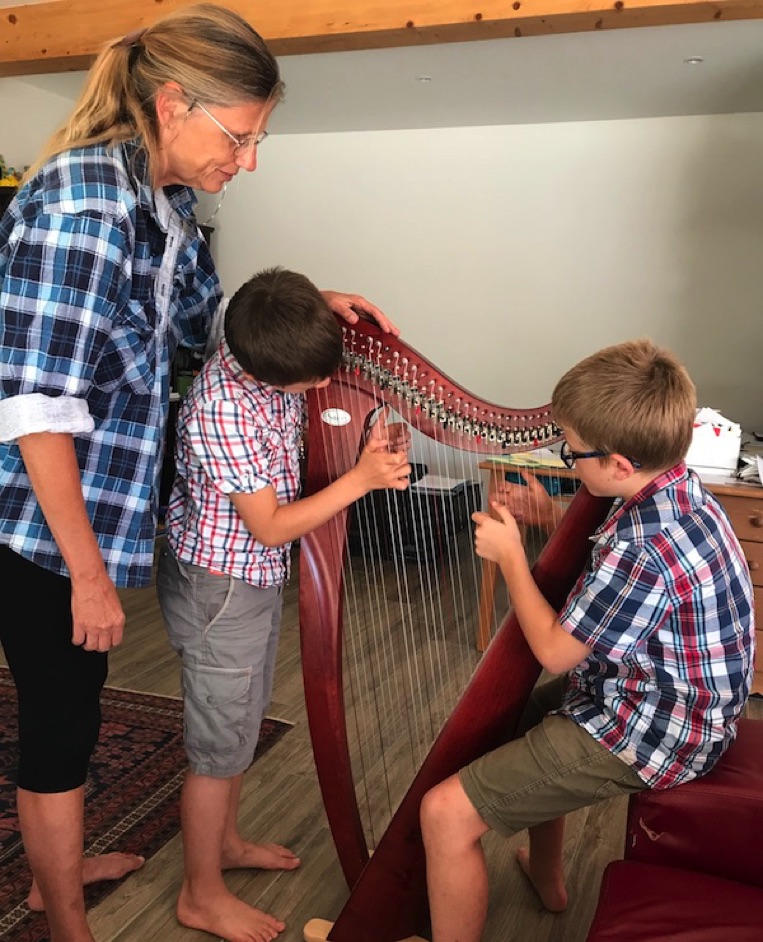
Rita also took great delight in seeing that the pumpkins she had planted with Sarah earlier in the summer were reaching their full potential.
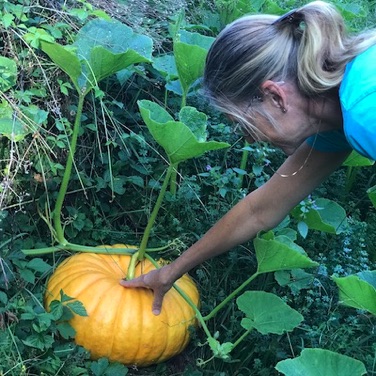
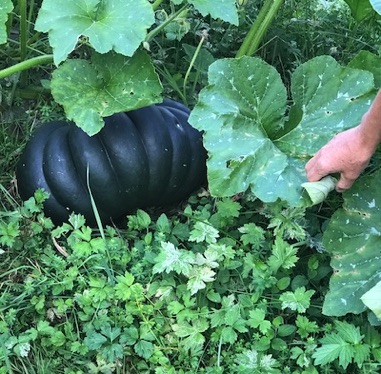
Later that evening we drove back to Auxonne, for the start of my last few days on the boat this year.